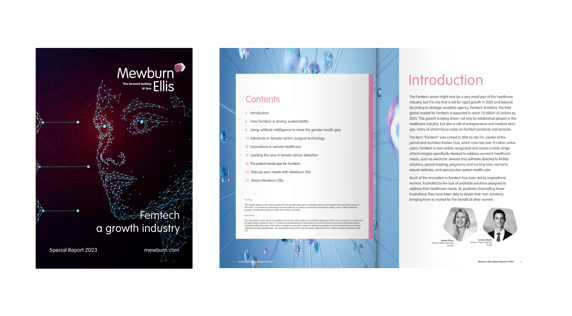
Over 14,000 postmenopausal women in England may benefit from the recent approval of new osteoporosis drug abaloparatide by the National Institute for Health and Care Excellence (1,2).
This news understandably brings drugs for treating osteoporosis into the limelight. But exciting developments in osteoporosis treatment, arising from research by NASA, are also taking place in the medical device sector. In this blog, we focus on vibration-based medical devices for the prevention of osteoporosis, which may meet a long-felt need for many post-menopausal women.
What is osteoporosis?
Bone tissue is continually lost and rebuilt in the body. Cells known as osteoclasts remove old, calcified bone tissue, and osteoblast cells cause new bone tissue to grow.
Osteopenia refers to the condition in which the rate of bone loss is excessively high compared to the rate of bone growth and becomes osteoporosis, literally “porous bones”, once the bone density falls below a certain threshold. The result is weak bones in danger of breaking.
Postmenopausal women are at particular risk of developing osteoporosis, due to a sharp reduction in bone-protecting hormone oestrogen after the menopause. Women are four times more likely than men to have osteopenia, and a predicted 1 in 2 women over 50 will suffer a bone density related fracture (3,4).
Clearly, preventing and treating osteoporosis is crucial for women’s health.
Poor adherence to medication
Drugs are the primary treatment option for osteoporosis patients. There are antiresorptive drugs, such as bisphosphonates, which slow the rate of bone loss and anabolic drugs, such as romosozumab, which increase the rate of bone growth. However, adherence to osteoporosis medications is poor. Studies show that approximately 20% to 30% of patients taking daily or weekly treatments may suspend their treatment within 6 to 12 months, usually due to negative side effects, or worries about such effects (6).
For these reasons, a non-drug related treatment option may be beneficial for those at risk of osteoporosis.
One giant leap
Research by NASA points to a potential solution. NASA’s interest in this field is not surprising – due to prolonged exposure to microgravity environments, astronauts are at high risk of developing osteoporosis.
The NASA research shows that vibrations can be used to stimulate bone growth (7). It is thought that certain vibrations replicate the effect of exercise on the bones, tricking the body into growing more bone tissue (bone tissue, similar to muscle tissue, gets stronger with exercise) (7). By standing on a lightly vibrating plate for 10 to 20 minutes a day, the typical 1 to 2% monthly bone loss experienced by astronauts in space was found to be prevented (8).
Enter the FemTech sector. Companies invested in women’s health have developed products, based on the original NASA research, for home use by osteopenia patients.
One such product is the Osteoboost device, a belt which delivers vibrations directly to the hips and the lumbar spine (9). In this way, vulnerable parts of the body can be targeted, while the patient is free to walk around. Clinical trial results have shown a high reduction in loss of vertebral bone strength and vertebral bone density for users of the device, as well as a high compliance rate for the treatment (10).
Another vibration therapy device is the Marodyne Liv device, a medical vibration plate which has been certified to prevent and combat osteoporosis. Its clinical trial results show that standing on the device for 10 minutes a day can strengthen the bones and lower the risk of fractures.
Evidently, NASA’s research has paved the way for osteoporosis prevention to expand into the medical device sector. Postmenopausal women have the option of using vibration-based medical devices to reduce their risk of osteoporosis in a simple and convenient way.
Our Mewburn Ellis teams are passionate about using IP to support technology advancements that help improve the lives of women across the globe – whether they are astronauts or academics, clinicians or computer analysts, scientists or software engineers.
Please get in touch to find out how we can help support your IP needs.
|
|
Femtech: a growth industryOur report explores just some of the exciting new technologies that have entered the Femtech market in recent years, as well as analysing the patent landscape to better understand the evolution of the Femtech space and how technology focuses are shifting. |
- https://www.nice.org.uk/guidance/TA991
- https://www.theguardian.com/society/article/2024/aug/07/new-drug-that-could-prevent-osteoporosis-approved-for-nhs
- https://www.ncbi.nlm.nih.gov/pmc/articles/PMC5380170/
- https://www.bonehealthandosteoporosis.org/preventing-fractures/general-facts/what-women-need-to-know/
- https://www.nhs.uk/conditions/osteoporosis/prevention/
- https://pubmed.ncbi.nlm.nih.gov/17233546/#:~:text=Adherence%20to%20osteoporosis%20medications
20is%20relatively%20poor.%20Approximately,increase%20their%20risk%20of%20osteoporotic%20fractures%20and%20hospitalisation - https://www.sciencedaily.com/releases/2001/10/011003065112.htm
- https://theros.org.uk/media/uvsdna2v/vibration-therapy-fact-sheet-august-2017.pdf
- https://www.bonehealthtech.com/
- https://www.bonehealthtech.com/osteoboost-clinical-trial/
Charlotte is a patent attorney working as part of our engineering and ICT team. She is experienced in working at all stages of the patent application process. She has also been involved in broader commercial strategy projects, for example analysing competitor patent activity. Charlotte has a keen interest in medical technologies, especially those in the “FemTech” sector which are designed to support women’s health.
Email: charlotte.lynch@mewburn.com
Sign up to our newsletter: Forward - news, insights and features
Our people
Our IP specialists work at all stage of the IP life cycle and provide strategic advice about patent, trade mark and registered designs, as well as any IP-related disputes and legal and commercial requirements.
Our peopleContact Us
We have an easily-accessible office in central London, as well as a number of regional offices throughout the UK and an office in Munich, Germany. We’d love to hear from you, so please get in touch.
Get in touch

-1.png?width=100&height=100&name=Charlotte%20Lynch%20circle%20(1)-1.png)

